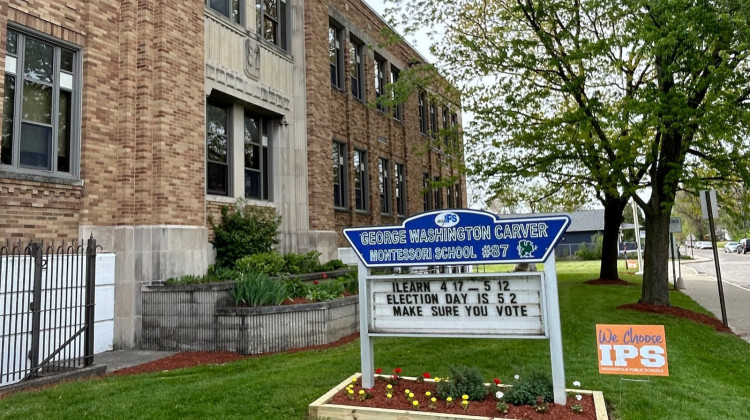School districts and nutrition advocates across the state are celebrating National Breakfast Week as Congress passes legislation that could make it harder to feed students next school year.
Federal lawmakers approved a spending plan this week that would not renew pandemic-related child nutrition waivers that gave schools flexibility in how they serve students meals, such as allowing grab-and-go meals and meal delivery.
National Breakfast Week promotes healthy morning meals for children to give them nutrition to improve their well-being and focus more in school.
Roughly one in six Hoosier children were experiencing childhood hunger before the COVID-19 pandemic, according to the Indiana Youth Institute. The Indiana Partnership for Hunger-Free Students – a coalition including groups such as Purdue Extension and Ascension St. Vincent – is trying to address that.
One member of the coalition, No Kid Hungry Indiana, works with schools and community food service directors to provide technical assistance, resources and grant funding to help them access free healthy meals for food insecure students.
Even though schools in Indiana have returned to in-person instruction, advocates want Congress to continue the flexibility, especially for free meals. No Kid Hungry Indiana helps schools implement innovative school breakfast programs, such as allowing students to eat their breakfast in their classroom instead of enduring the peer pressure associated with walking to the cafeteria for breakfast.
“So that stigma of, ‘I’m going to the cafeteria’ may signify to other students that I need [food] is a really big barrier. It's a social pressure kind of barrier,” said Tarrah Westercamp, Indiana manager of No Kid Hungry.
But Westercamp said it’s not easy to change up breakfast models. Carts or insulated tote bags are needed to keep the food and drinks at their appropriate temperatures when served to classrooms.
The West Washington School district, near Salem, was able to increase the number of students who ate a healthy breakfast from 32 percent to 59 percent after starting the classroom breakfast service.
No Kid Hungry Indiana works directly with 40 school districts, including Metropolitan School District of Wayne Township. The district used grant funding for their grab-and-go meal program, as well as a tower garden with hydro plants so students can learn about nutrition education.
But a lot of these changes may not have been possible if the federal government didn’t loosen food distribution rules during the pandemic.
What’s at stake without federal food waivers?
When in-person schools shut down in March 2020, school staff had to quickly rethink how to continue feeding children in low-income households. The U.S. Department of Agriculture granted a waiver program that gave schools more flexibility to serve meals to students.
That included allowing school districts to implement grab-and-go meals or meal delivery when school buildings were closed, and allowing schools to get food from different manufacturers in response to national food supply shortages.
These waivers are set to expire June 30, and Congress’ bipartisan omnibus appropriations bill that is headed to President Joe Biden for his signature does not include language to renew these waivers.
U.S. Sen. Debbie Stabenow (D-MI) said 30 million students who eat meals at school and programs would be hurt, especially at small and rural schools.
"Extending these bipartisan tools is essential to helping schools ease back into regular operations for our children," Stabenow said during debate of the bill.
School districts across the country been unable to purchase school lunch staples like beef patties, and have had to pivot to serving sloppy joes because that is allowable under the federal waiver.
“There's just not enough products out there,” Westercamp said. “And with the requirements that school nutrition programs have, or child nutrition programs, it's a little difficult to meet the regulations and serve kids great, nutritious meals.”
If the waiver isn’t approved while the national food shortage continues, it could make it harder for school districts to serve kids when food manufacturers are out of stock, have stopped producing certain food items or no longer plan to work with schools.
Contact WFYI education reporter Elizabeth Gabriel at egabriel@wfyi.org. Follow on Twitter: @_elizabethgabs.
 DONATE
DONATE







 Support WFYI. We can't do it without you.
Support WFYI. We can't do it without you.